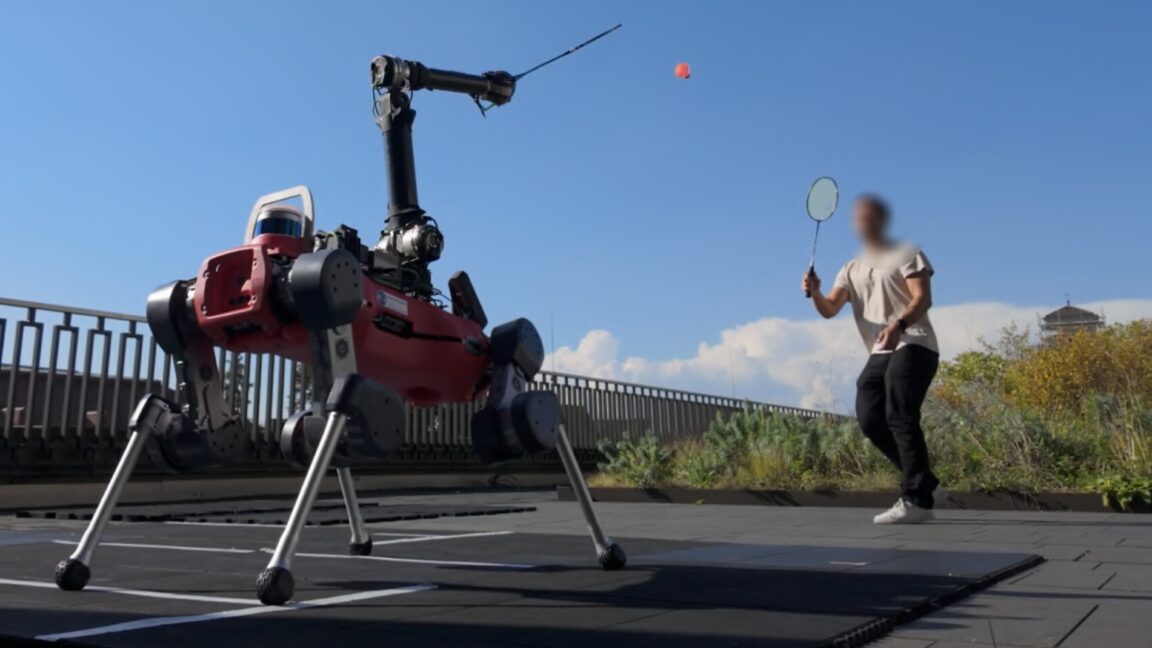
"It also learned fall avoidance and determined how much risk was reasonable to take given its limited speed. The robot did not attempt impossible plays that would create the potential for serious damage-it was committed, but not suicidal."
"The average human reacts to visual stimuli in around 0.2-0.25 seconds... elite badminton players can cut this time down to 0.12-0.15 seconds. ANYmal needed roughly 0.35 seconds after the opponent hit the shuttlecock."
"Perception is still a big issue... the robot localized the shuttlecock with the stereo camera and there could be a positioning error introduced at each timeframe."
"The team already has some ideas on how to make ANYmal better. Reaction time can be improved by predicting the shuttlecock trajectory based on the opponent's body position, rather than waiting to see the shuttlecock itself."
The article discusses the limitations of ANYmal, a robot programmed to play badminton. Despite its commitment to avoid dangerous moves, ANYmal struggles with reaction time and visual perception, making it less competitive against human players. Average human reaction times are significantly faster than ANYmal's, with the robot requiring around 0.35 seconds to respond to shuttlecock trajectories. The article highlights the potential for improvement, such as predicting trajectories and enhancing visual sensors to increase performance in future matches.
Read at Ars Technica
Unable to calculate read time
Collection
[
|
...
]